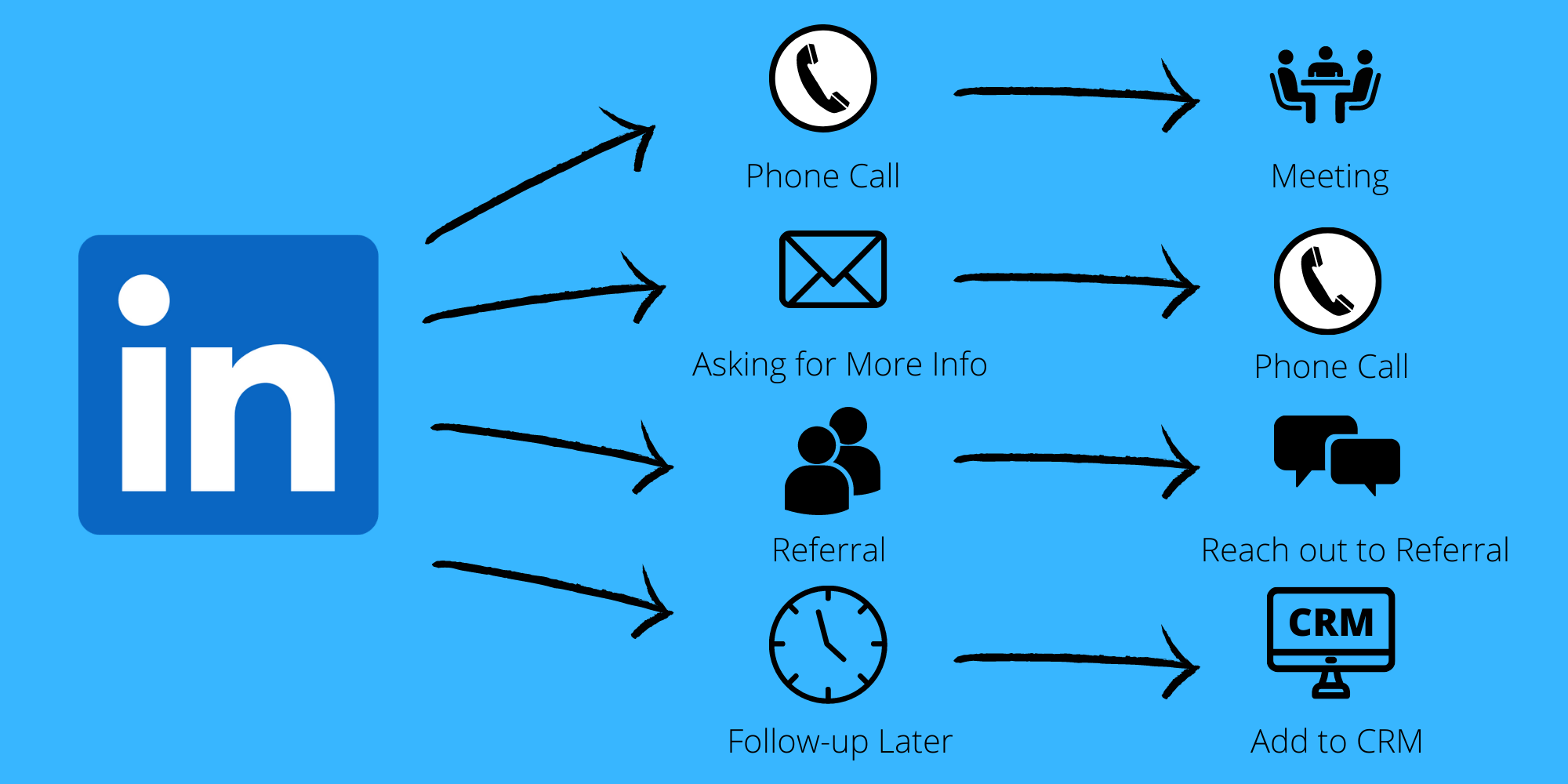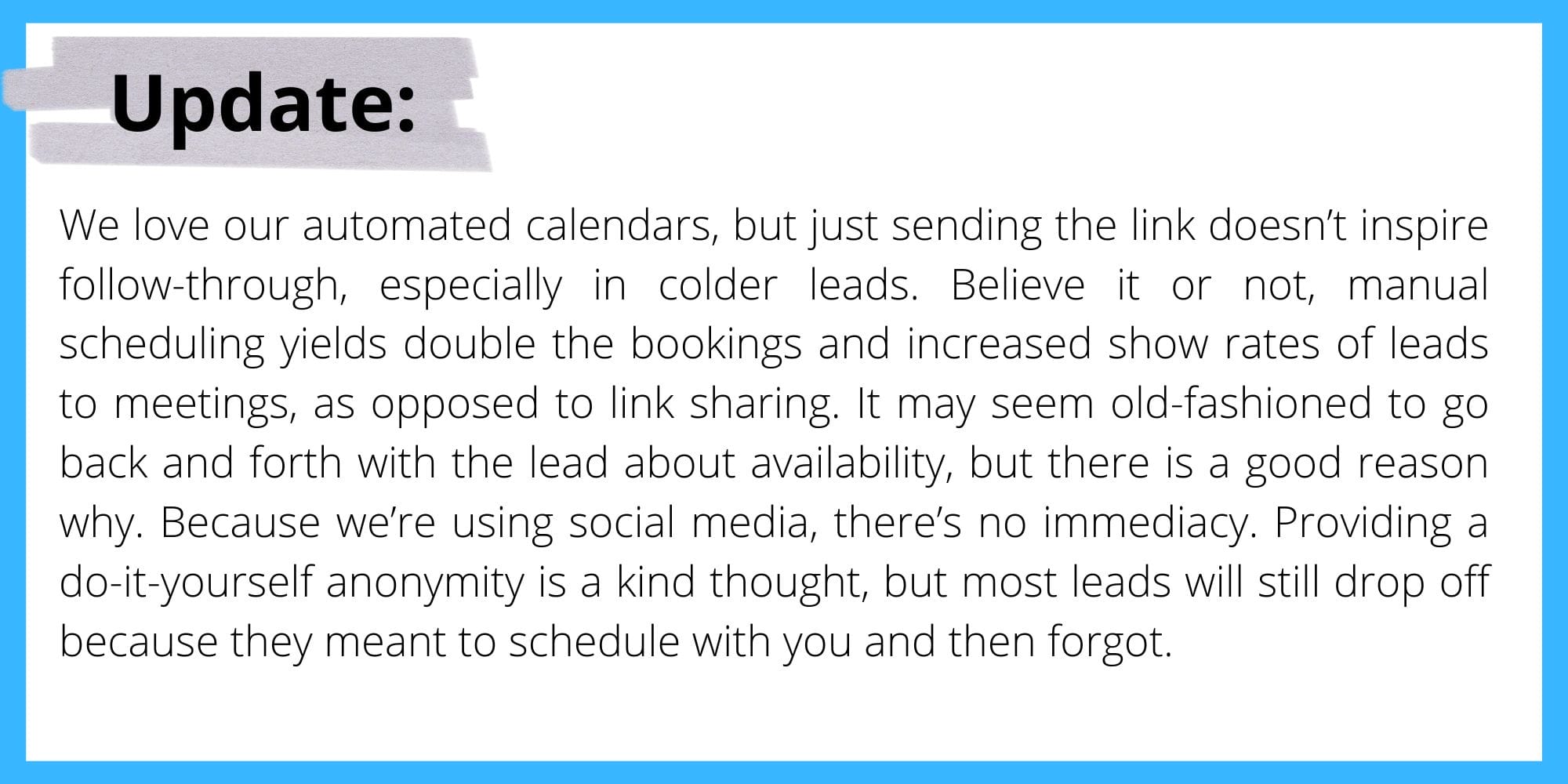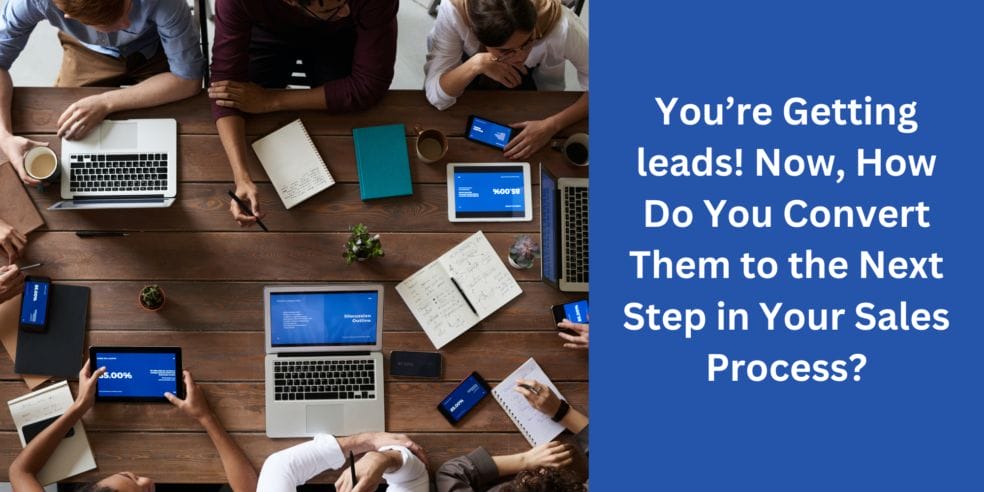Imagine this: it’s a Monday morning, and you’re just a few days into a new marketing campaign. You have your coffee, morning news, and you’re just now opening your email. You see a couple new leads assigned to you from your lead tracker. One says, “Prospect would like to meet. Follow up!” Now, it’s up to you to convert it into a customer.
Some people who are new to outbound sales need a little help bridging the gap between prospect and customer. Fortunately, by warming your prospects into leads, we do the heavy lifting for you; however, that doesn’t necessarily mean they will all automatically turn into customers.
Knowing how to improve your sales process is essential, and it can take your outreach efforts to the next level.
Fear not, we have a couple tips for how to convert leads (without being a sales expert).

What’s the Strategy for Moving Leads Down the Sales Funnel?
The best piece of advice here is to remember your prospects and leads are being reached through a social media marketing campaign. This means that there is a lot of other noise going on in their newsfeed and in their inboxes. Plus, they are incredibly busy and may not remember conversations taking place during their coffee break.
We always recommend ending your messages with a clear action item for your prospect. This action item should help you initiate the next step, which could be as simple as asking a question or as direct as requesting a time to meet.
When in doubt, use a simple sentence. Here are some real examples:
“Glad to hear you’re interested – when’s a good time to chat?
Here’s my calendar link – schedule here and it will send us both a calendar invite!”
“Do you want me to send the evaluation form link so you can get started?”
If you send calendar links, make sure you keep appointment reminders turned on, which will allow systems like Calendly or ScheduleOnce to automatically remind the prospect via email and text message (it really boosts show up rate!). Again, these people are busy. It’s easy to miss a calendar appointment, especially if it isn’t a required part of their job. If you make it easy for them to remember you, they are more likely to make it to the meeting, and they are more likely to build that relationship with you.

As a general rule, the more the customer sees your name and brand, the more trust your prospects will have and the less risk they will feel when taking that next step.
Fun fact: In his book, “Fanatical Prospecting,” popular sales expert, Jeb Blount names this phenomenon “the law of familiarity.” His advice is to make sure your prospects see your name, company, brand, product, service in multiple locations. In other words, he teaches salespeople to nurture their leads.
Our research shows that it takes 7-13 touchpoints to turn leads into opportunities. People rarely buy on the first interaction in B2B, and they likely need more information until they understand (1) their problem well enough to want a solution and (2) your product or service enough to know and trust that it will solve their problem. Again, this usually doesn’t all happen on one call. Following up, and following up often, is the single most important strategy for building meaningful relationships with your prospects.
To learn more about our research and LinkedIn messaging strategies, check out this blog post: How to Nurture Your Leads

Get Someone on Your Team to Help Nurture Your Leads
Following up with leads as soon as possible is crucial for them to remember you. They’re busy professionals too, so don’t risk them going cold on you.
Try assigning an SDR or a team member to own new leads.
Did you know that we will add and notify multiple people on your lead tracker? It’s very easy for us to do. Plus, we have seen plenty of success from clients who have multiple people addressing their leads. We tag every case that needs your attention, which makes it easy to delegate to someone in your company.
In practice, this looks like a drip email campaign. Many clients will use Hubspot and other tools to ensure the leads they receive get a timely response that will get them to the call.
To aid your efforts, here are some additional tips about How to follow up with prospects on LinkedIn
Keep Posting on LinkedIn and Share Valuable Resources
To increase the number of touchpoints your prospects receive, we also recommend being an active user on LinkedIn. New connections often receive a notification the first time their new contact posts, so posting often means that your new connections are always seeing content.
For leads, this means that continued posting also increases the trust associated with your name and brand.
For more ideas about what to post, check out this blog post: 5 Things to Post on LinkedIn to Stay Top of Mind – Speedwork
Analyze Your Lead Data
Another great part of our process is that we provide contact information that can help you get in touch with your prospects whenever you’d like. Normally, finding and gaining access to a list like this, especially with prospects in your target audience, can get pretty expensive.
Not only do we have ours built into the process, but you will never have to make a cold call with this list. Everyone in your list is someone who already decided to connect with you on LinkedIn, so use it!
We find about one third of prospects keep their phone number public on LinkedIn. As far as emails, the vast majority of prospects keep theirs visible to their network.
From their perspective, keeping this information visible is a way for them too to get found, find opportunities, boost their SEO, and more.
So, don’t be afraid to use your list and call your prospects. It’s still the single most effective sales strategy to date. Treat this email list like gold – this is your target audience.

What else can you do?
Use this guide as an optimization checklist for your outbound sales process. That said, if your offer just isn’t converting, it may be an offer positioning issue, a product-market fit issue, or a target persona issue. Consider testing a new audience or repackaging your offer. Make sure your offer conveys value and then make it easy for them to say yes with options such as a low pressure chat or free assessment.
We are always happy to jump on a strategy call with you to discuss campaign performance, improvements, and creative experimentation.
Happy lead nurturing!
